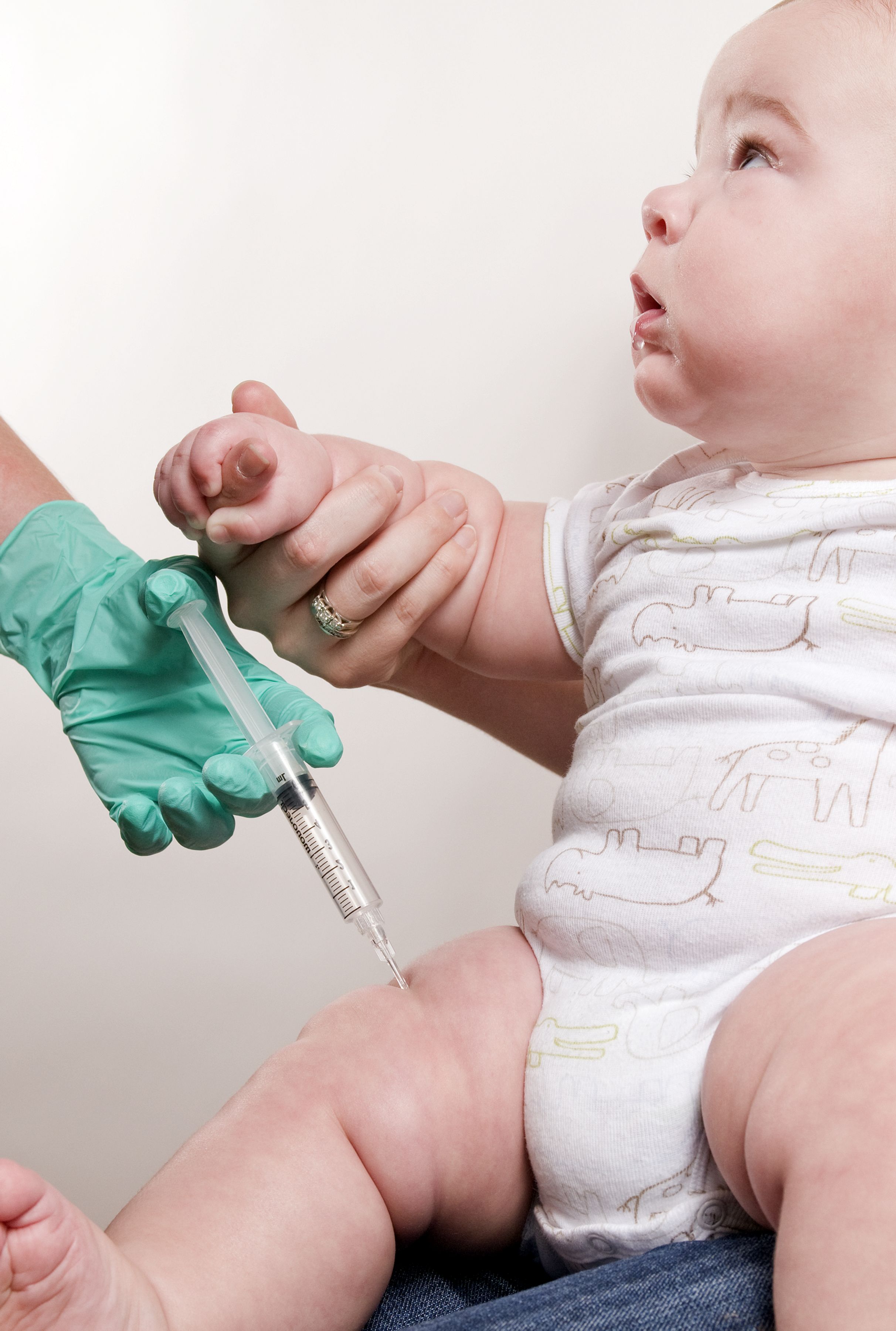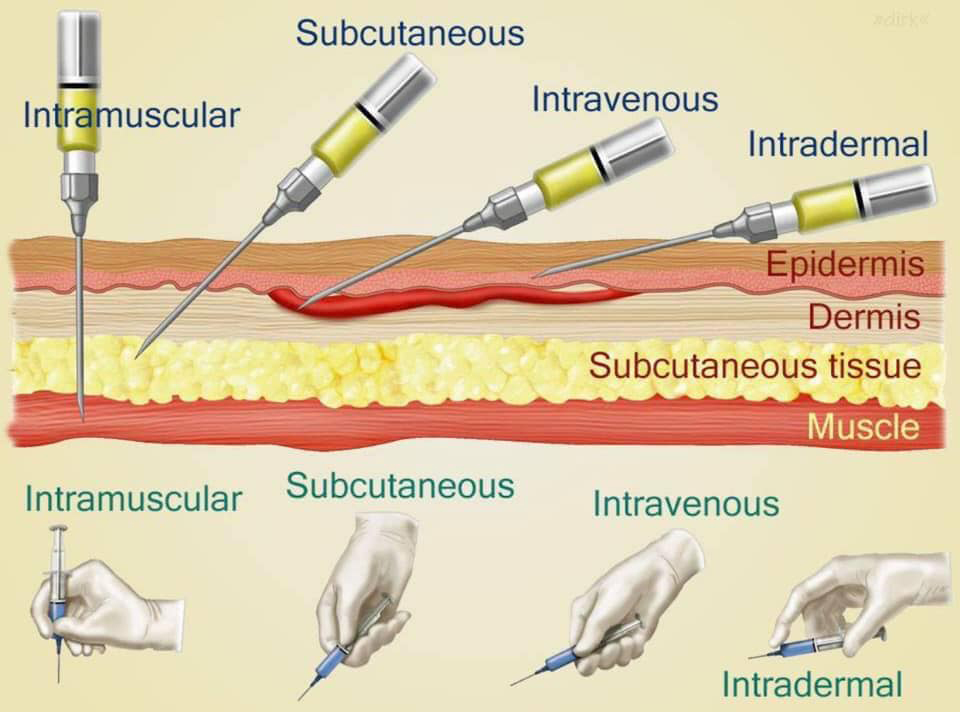

Place a cotton ball or gauze at the injection site and put pressure on the site for 30 seconds to 1 minute. Take the needle out quickly, at the angle in which it was injected. If there is no blood, inject the medicine slowly until the syringe is empty. Start over with steps 2-9 to draw up a new dose of medicine and inject at a new site. Put gentle pressure on the site with a cotton ball or gauze for 30 seconds to 1 minute. If you see blood in the syringe, do not inject the medicine and take the syringe out and throw it away in a Sharps container.

Supporting the syringe with your nondominant hand, pull the plunger slightly with your dominant hand to check for blood unless your health care provider has told you this step is not needed. Never place the syringe with uncovered needle on the surface you are working on. It is OK to put the cover on the needle for a short time. Before removing the needle, be sure you have the proper amount in the syringe. If the air bubble is at the top of the syringe, push gently on the plunger so the air goes back to the bottle. Bubbles can be removed by flicking the syringe with your finger. (Diagram C)Ĭheck for air bubbles in the syringe. Draw back the plunger to the correct mark, _ ml. Be sure the needle is in the bottle and below the fluid level. Using one hand, turn the vial with the syringe upside down. Inject air into the bottle by pushing down on the plunger. Insert the needle straight into the vial through the rubber top. To draw air into the syringe, pull the plunger back to the correct volume, _ cc (ml). Use an alcohol swab and wipe that area well using outward circular motion for 10 seconds. Screw a needle on the syringe hub unless your syringe comes with a needle already attached. Note: If your syringe is already drawn up, skip steps 2-7. Gather the supplies you need and place them on a clean, dry surface. Wash your hands well with soap and water.


 0 kommentar(er)
0 kommentar(er)
